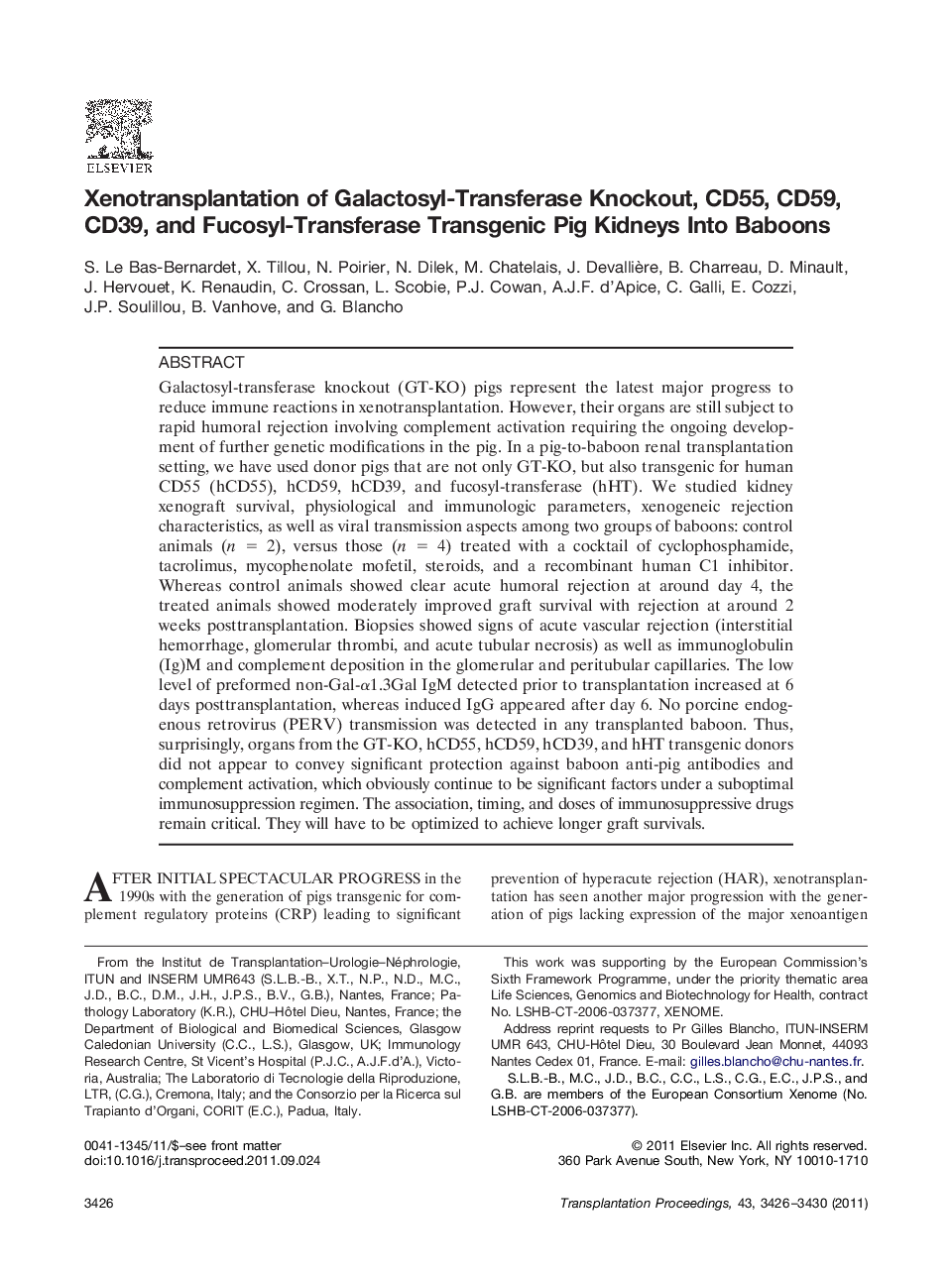| Article ID | Journal | Published Year | Pages | File Type |
|---|---|---|---|---|
| 4258613 | Transplantation Proceedings | 2011 | 5 Pages |
Galactosyl-transferase knockout (GT-KO) pigs represent the latest major progress to reduce immune reactions in xenotransplantation. However, their organs are still subject to rapid humoral rejection involving complement activation requiring the ongoing development of further genetic modifications in the pig. In a pig-to-baboon renal transplantation setting, we have used donor pigs that are not only GT-KO, but also transgenic for human CD55 (hCD55), hCD59, hCD39, and fucosyl-transferase (hHT). We studied kidney xenograft survival, physiological and immunologic parameters, xenogeneic rejection characteristics, as well as viral transmission aspects among two groups of baboons: control animals (n = 2), versus those (n = 4) treated with a cocktail of cyclophosphamide, tacrolimus, mycophenolate mofetil, steroids, and a recombinant human C1 inhibitor. Whereas control animals showed clear acute humoral rejection at around day 4, the treated animals showed moderately improved graft survival with rejection at around 2 weeks posttransplantation. Biopsies showed signs of acute vascular rejection (interstitial hemorrhage, glomerular thrombi, and acute tubular necrosis) as well as immunoglobulin (Ig)M and complement deposition in the glomerular and peritubular capillaries. The low level of preformed non-Gal-α1.3Gal IgM detected prior to transplantation increased at 6 days posttransplantation, whereas induced IgG appeared after day 6. No porcine endogenous retrovirus (PERV) transmission was detected in any transplanted baboon. Thus, surprisingly, organs from the GT-KO, hCD55, hCD59, hCD39, and hHT transgenic donors did not appear to convey significant protection against baboon anti-pig antibodies and complement activation, which obviously continue to be significant factors under a suboptimal immunosuppression regimen. The association, timing, and doses of immunosuppressive drugs remain critical. They will have to be optimized to achieve longer graft survivals.
